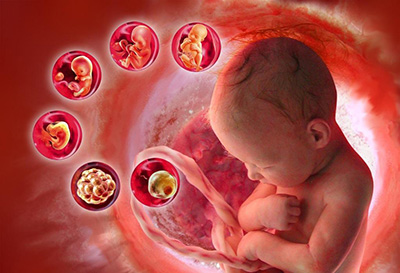The body of each woman gives an individual response to all procedures carried out in the framework of in vitro fertilization. One of the key ingredients for success is the quality of the embryo transfer preparation. According to statistics, more than 70% of IVF cases are successful. But of course, after replanting the embryo, every expectant mother is most worried about the question: could the embryo "fix itself", and did the long-awaited pregnancy come about? The process of embryo attachment to the uterus is well understood today.

How the embryo attaches to the uterus with IVF
Attachment is understood as the invasion of the embryo into the maternal endometrium. This is a complex and multi-step process. The state of the endometrium depends on the phase of the menstrual cycle. It can be called susceptible to implantation only 5-7 days after ovulation, this time is called the "implantation window". First, the embryo is located in the uterine cavity, and then it attaches to the endometrial epithelium through the trophoblast - the outer layer of cells that provide contact between the embryo membrane and the endometrial epithelium. Then the embryo is partially immersed in the endometrium, penetrates deeper and deeper. The defect that formed during the implantation of the embryo is closed by a fibrin clot. After about 12 days, this defect in the endometrial epithelium is invisible, and the embryo is completely immersed in its tissue, forming a bulge in the uterine cavity. During this period, blood flow increases, the mother's body begins to feed the embryo. Sometimes at this point there is a slight bleeding, which usually occurs on the expected date of menstruation.
Symptoms and signs of embryo attachment during IVF
- Minor bleeding (IMPORTANT! In case of heavy bleeding, comparable to menstruation, an urgent need to consult a doctor);
- Drawing pains in the lower abdomen;
- Temperature rise to 37 ° C.
Feelings when the embryo is attached to the uterus
Can the stomach hurt when the embryo is attached? Can you feel the attachment of the embryo to the uterus? All these questions are of concern to women after the IVF procedure. The sensations during embryo implantation cannot be called specific, characteristic only for this situation. Moreover, the psycho-emotional state of a woman during this period is often unstable, which is associated with anticipation and anxiety about the results of in vitro fertilization. Nevertheless, in addition to the symptoms listed above, you can pay attention to a change in taste sensations, changes in health and mood, lethargy, fatigue, and drowsiness. Many women note a feeling of heaviness, aching pains in the lower abdomen. The discharge when the embryo is attached to the uterus can be called scarce, they have a light shade. The amount of discharge is so small that women often do not notice it. Heavy bleeding is not the norm.
What contributes to the attachment of the embryo to the uterus during IVF
A number of factors contribute to the onset of pregnancy. These include taking progesterone drugs (Dyufaston, Utrozhestan, Endometrin). Progesterone creates optimal conditions for the implantation of a fertilized egg, relaxes the muscles of the uterus. During the first 3 days, a woman is recommended to have a semi-bed rest. It is necessary to give up sports, intense exertion, stress, sexual intercourse, visiting the pool, baths, saunas and taking a bath. It is not recommended to use hygienic tampons, or to take any medications without consulting your doctor.
When to do the test after embryo attachment with IVF
It makes sense to do a pregnancy test 15 days after the embryo transfer. At an earlier date, the result will be negative, since the level of hCG (human choreonic gonadotropin) is not yet high enough. Moreover, even if you see a negative result after 15 days, do not panic. The level of the hormone in the urine may still be low. Do not stop taking progesterone and other medicines prescribed by your doctor. Laboratory tests of blood and urine will help to reliably identify the onset of pregnancy or its absence. You can take a blood test as early as 12 days after the embryo transfer, and urine tests - by 14. It is pointless to do research earlier, as they can give a false negative result. Be patient, and good news will not keep you waiting. 3 weeks after the embryo transfer, an ultrasound scan is performed, which makes it possible to more reliably establish the pregnancy and its localization.
Why the embryo does not attach during IVF reasons
Even if pregnancy has not occurred, do not despair. Together with the doctor, you should analyze the reasons why this happened. Perhaps there is a hormonal imbalance, deterioration in health or exacerbation of chronic diseases during the IVF program, the woman's age is over 35 years, disorders of the uterus and endometrium (thin endometrium, endometrial hyperplasia, endometrial polyp). Do not engage in self-diagnosis, it can lead to incorrect conclusions. It is necessary to consult with a specialist and undergo an examination in order to best prepare for a new attempt to become happy parents.
